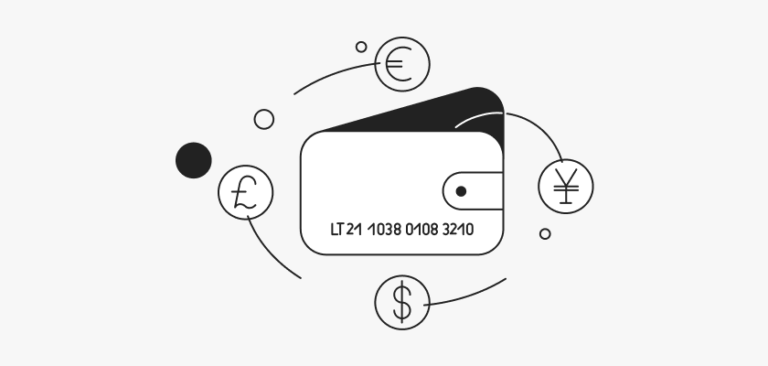E-commerce Beyond Borders a Quick Guide to Going Global
Once you’ve figured out why you want to go global and whether your business has the capacity to expand that much, it’s time to set your goals. Think about what you want the outcome to be and plan how you’re going to get there.
It`s a big world out there, but if your focus is only on the local market, be prepared: there is only a limited amount of business you can get.
Sooner than later, you will reach a point in your business development when expanding your company into other parts of the world will become your priority-especially if you sell digital products and software that doesn’t need shipping.
Cross-border eCommerce isn’t always a walk in the park. You need to address aspects including overseas rules and regulations, export restrictions, currency fluctuations, cultural norms, and different payment expectations.
This begs the following question: how can you create a seamless shopping experience not only for local customers, but also international ones? How can you put together an experience they want and deserve, as well as drive revenue from a relatively new channel that’s still in the development stages?
Taking your business global requires a little forethought. To help you out, we’ve put together a quick guide that will tell you what you need to think about.
First question: why would you want togo global?
Since we have just mentioned the challenges even in the first paragraphs of this article, right? Even so, global reach is inevitably, the next logical step if you run a digital product business.
The surge in mobile devices and social media platforms means consumers are browsing sites from all over the world on a daily basis, so why wouldn’t their shopping habits tie into that too? In addition, online shops don’t need opening hours,and consumers can browse prices and products at any time of the day from wherever they are. This means they can hunt down cost-effective options that may or may not be located overseas.
Now let`s dive into the main steps you need to take into account.

Draft your strategy
While it might be tempting to dive straight in and take your business global right away, that can actually do more harm than good. Expansion takes time, so it’s worth preparing an international business plan before you even start thinking about where you’re going to sell and when. Deciding whether you’re even ready to grow is essential, and then you need to dig deep and evaluate your needs.
Once you’ve figured out why you want to go global and whether your business has the capacity to expand that much, it’s time to set your goals. Think about what you want the outcome to be and plan how you’re going to get there.
This international plan of action will help keep you on the right path and make the growth process that little bit easier.
Do your research on foreign markets
According to e-marketer service Worldwide eCommerce will approach $5 trillion this year. This indicates that more and more shoppers are choosing to buy goods from foreign sites, with 38% regularly making purchases in stores outside of their home country. And, with so many people willing to shop further afield to get the perfect item, there’s no end to the amount of customers you can reach.
You might well be successful selling your goods in your home country but that might not translate into other markets, which is why conducting foreign market research should be high on your list of priorities if you’re looking to expand.
Depending on the markets you want to get into, you’ll need to look at the individual selling landscapes within those countries. Then, once you’ve done that, you need to make sure you’re ready to sell there. First things first, you might need to make a few changes to your product, such as:
- Translating your site into the native language of the country you’re selling in
- Localise your site, which means going beyond simply translating it into a different language. Different cultures interpret information in different ways, which means you need to check colours, symbols, and graphic devices are appropriate for the new market
Evaluate distribution and payment processes
If you’re selling actual products, you’ll need to get a distribution process in place. This might mean working with agents, representatives, and setting up joint partnerships with other successful businesses in that market.
This will give you a head start in the expansion game, especially if you pair up with companies that already have an audience and can help you build trust and credibility in that market.
If you’re selling digital products, the distribution method is less important, but you’ll still need to think about how the customer journey will work from start to finish. You’ll want to place extra emphasis on the checkout process and your chosen payment solution in each market.
Look into the different payment options available and the method your desired market prefers to pay in and then match them up. Ideally, you want to go for a solution that automatically lets buyers pay in their currency, in their own language, and via their favourite method.
Set Prices
You’ve probably got your prices set in stone for your own country, but how will they translate to other parts of the world? Remember, different places value items differently, and what might be considered a fairly cheap price in a Western country might be out of reach for people living in developing countries.
Before you start selling your products overseas, determine price points that tie in with the market you’re targeting. Be sure to check cultural, social, legal and economic differences, too, as these can provide the biggest barriers and challenges for businesses looking to expand.
But it’s not enough to just display the local currency. You also want to optimise prices in each country you’re serving in order to increase conversions and create a happier customer experience.
Omni-channel pricing is increasingly important. Dealing with currency exchange is difficult, so implementing a payment solution that serves up the methods each individual customer wants is vital.
The thought of taking your business overseas, where you’re not entirely sure of the local market and what people want, can be daunting. But if you already made up your mind, remember: first of all, do your homework.



